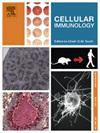IL-10: A Key Regulator and potential therapeutic target in uveitis
IF 2.9
4区 医学
Q2 CELL BIOLOGY
引用次数: 0
Abstract
Uveitis is a prevalent inflammatory eye disease that primarily affects working-age individuals and can lead to blindness if untreated. Interleukin-10 (IL-10) is a multifunctional cytokine with broad immunosuppressive properties and plays a significant role in various pathological and physiological processes. However, its specific role and underlying mechanisms in uveitis remain incompletely understood. This review aims to shed light on the biological characteristics of IL-10, its involvement in the uveitis pathophysiology, and its potential as a novel therapeutic target. By examining existing literature, the review analyzes IL-10 expression levels and regulatory mechanisms in different types of uveitis, discussing its role in immune regulation. Despite IL-10 being expressed variably across various forms of autoimmune uveitis, studies consistently highlight its protective role, prompting research into ways to enhance its bioavailability in the eye. IL-10 is often upregulated in infectious uveitis, contributing to pathogen immune evasion. Furthermore, primary intraocular lymphoma (PIOL), which shares clinical similarities with uveitis, also shows upregulated IL-10 levels, whereas IL-6 is more commonly elevated in uveitis. This differential expression suggests that IL-6 and IL-10 could be diagnostic markers to distinguish between PIOL and uveitis. Future research should continue to focus on elucidating the molecular mechanisms of IL-10 in uveitis, exploring its potential therapeutic applications, and developing targeted treatments that leverage the immunomodulatory effects of IL-10 to prevent and manage this sight-threatening condition.
IL-10:葡萄膜炎的关键调节因子和潜在治疗靶点。
葡萄膜炎是一种常见的炎症性眼病,主要影响工作年龄段的人,如不及时治疗可导致失明。白细胞介素-10(IL-10)是一种多功能细胞因子,具有广泛的免疫抑制特性,在各种病理和生理过程中发挥着重要作用。然而,人们对其在葡萄膜炎中的具体作用和潜在机制仍不甚了解。本综述旨在阐明IL-10的生物学特性、其在葡萄膜炎病理生理学中的参与及其作为新型治疗靶点的潜力。通过研究现有文献,综述分析了IL-10在不同类型葡萄膜炎中的表达水平和调节机制,讨论了它在免疫调节中的作用。尽管IL-10在各种类型的自身免疫性葡萄膜炎中的表达各不相同,但研究始终强调它的保护作用,促使人们研究如何提高它在眼内的生物利用率。在传染性葡萄膜炎中,IL-10 常常上调,有助于病原体的免疫逃避。此外,与葡萄膜炎临床相似的原发性眼内淋巴瘤(PIOL)也显示出 IL-10 水平的上调,而 IL-6 在葡萄膜炎中更常见的是升高。这种不同的表达表明,IL-6 和 IL-10 可以作为诊断标志物来区分 PIOL 和葡萄膜炎。未来的研究应继续关注阐明葡萄膜炎中IL-10的分子机制,探索其潜在的治疗应用,并开发能利用IL-10免疫调节作用的靶向治疗方法,以预防和控制这种威胁视力的疾病。
本文章由计算机程序翻译,如有差异,请以英文原文为准。
求助全文
约1分钟内获得全文
求助全文
来源期刊

Cellular immunology
生物-免疫学
CiteScore
8.20
自引率
2.30%
发文量
102
审稿时长
30 days
期刊介绍:
Cellular Immunology publishes original investigations concerned with the immunological activities of cells in experimental or clinical situations. The scope of the journal encompasses the broad area of in vitro and in vivo studies of cellular immune responses. Purely clinical descriptive studies are not considered.
Research Areas include:
• Antigen receptor sites
• Autoimmunity
• Delayed-type hypersensitivity or cellular immunity
• Immunologic deficiency states and their reconstitution
• Immunologic surveillance and tumor immunity
• Immunomodulation
• Immunotherapy
• Lymphokines and cytokines
• Nonantibody immunity
• Parasite immunology
• Resistance to intracellular microbial and viral infection
• Thymus and lymphocyte immunobiology
• Transplantation immunology
• Tumor immunity.
 求助内容:
求助内容: 应助结果提醒方式:
应助结果提醒方式:


